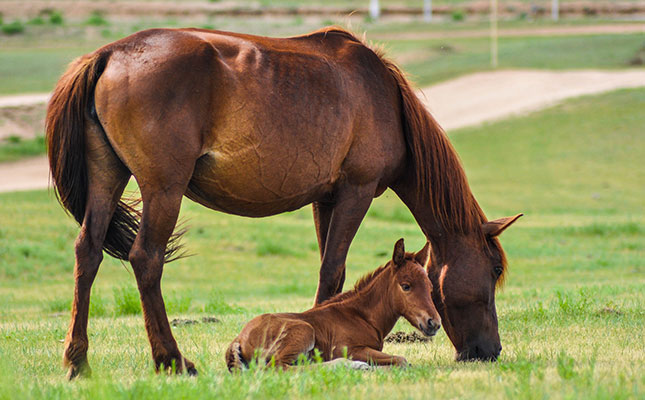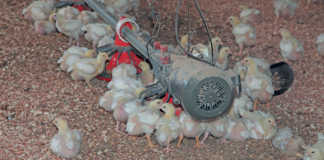
Photo: Pixabay
It is not always easy to tell when a mare is going to foal because the length of gestation can vary between 320 and 380 days, depending on the breed, the individual mare and even the weather.
The signs you should look for to estimate how long it is before she foals include the filling of the teats, and the relaxation of the hindquarter muscles and vulva. The behaviour of a mare very close to foaling also changes.
The udder
The mare’s udder starts to fill two to six weeks before foaling. Her teats will start to swell during the last week of gestation.
Sometimes, the veins along the sides leading down to the udder also engorge in the last few days, and older mares may also show swelling along the midline under her belly.
Waxing, which is dried colostrum on the tips of the teats, usually happens a few days before the foal is born.
The colour of mammary secretions also changes the closer the mare gets to foaling. In the beginning, these secretions are watery and a clear yellow, and change to more sticky and honey coloured, then become a yellow-white as the colostrum starts to come in.
The dripping or streaming of milk may indicate that she is very close to or in the process of foaling, as this is caused by increased oxytocin, a hormone responsible for the ripening of the cervix to aid in birth. However, dripping or streaming can result in a loss of milk so severe that the colostrum needed for the foal is wasted. If this happens, consult your vet.
Relaxation
The croup muscles around the seat of the tailbone relax, and when a mare is close to foaling, it is very easy to lift the root of her tail upwards. Her vulva becomes longer and more relaxed.
Often, her faeces becomes much softer the night before she foals, possibly because of the croup muscle relaxation. Check her faeces and hindquarter before you turn in for the night, as most foals are born in the early hours of the morning, often during rainy weather.
Foaling
There are four stages of parturition. In the first stage, the mare becomes restless and often keeps lifting her tail to urinate.
If she is running in a herd, the stallion may try to cover her. In this case, she is likely to move away with another mare to keep the stallion away. She may also kick at her belly, lie down and stand up or even roll.
Stage 1 generally lasts one to two hours, and ends with a rush of birth fluids as the allantoic membrane tears.
During Stage 2, the foal moves through the birth canal feet first before its nose appears. If it is still covered by afterbirth at this stage, it won’t be able to breathe, so you should tear the membrane open.
The foal should be through the canal in 15 to 30 minutes. If the mare strains for more than two hours after going into labour, the foal may be in the wrong position and you must call a vet urgently.
The foal should be delivered during Stage 2. During Stage 3, the afterbirth is delivered. You should always wash it off and check for holes, as retained afterbirth can be fatal for mares.
Dr Mac is an academic, a practising equine veterinarian and a stud owner.











